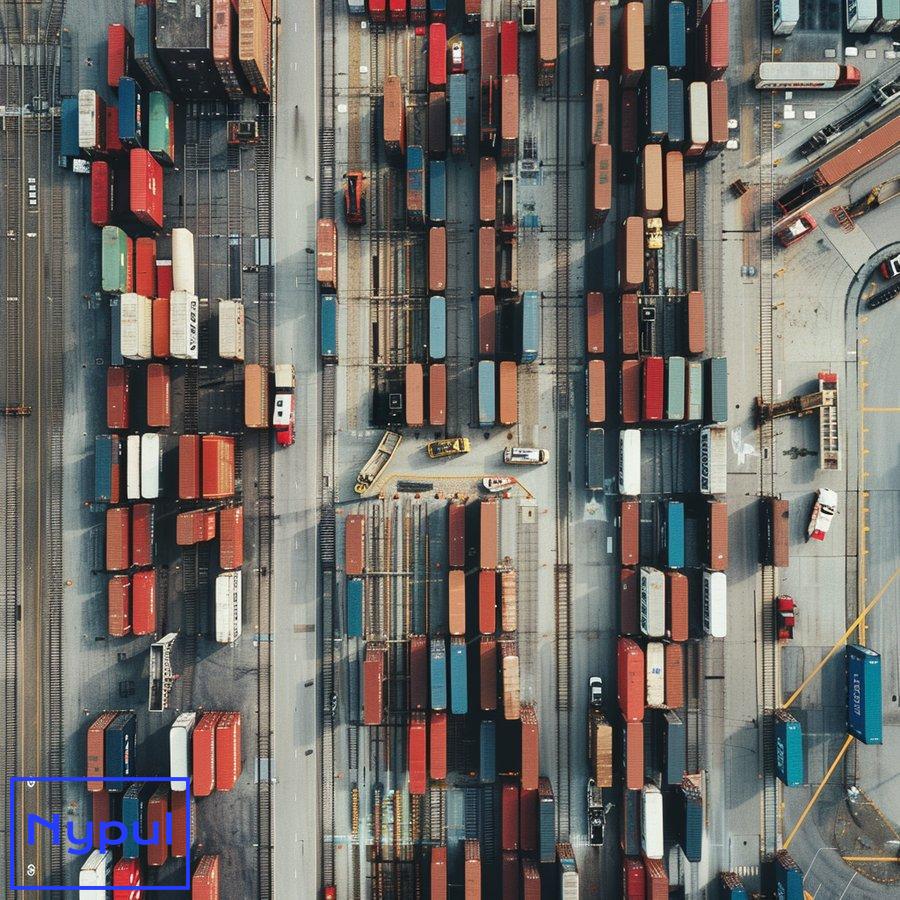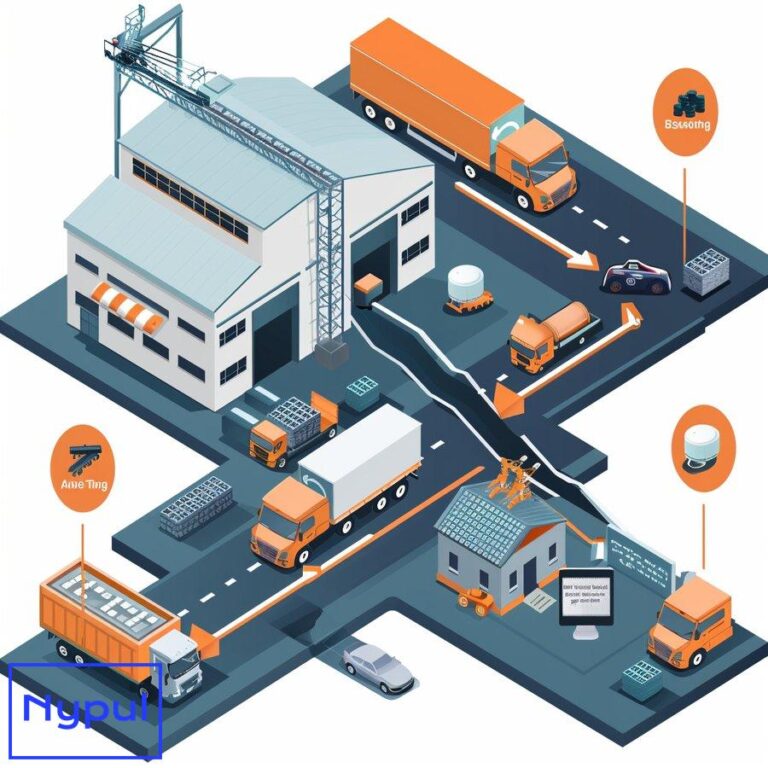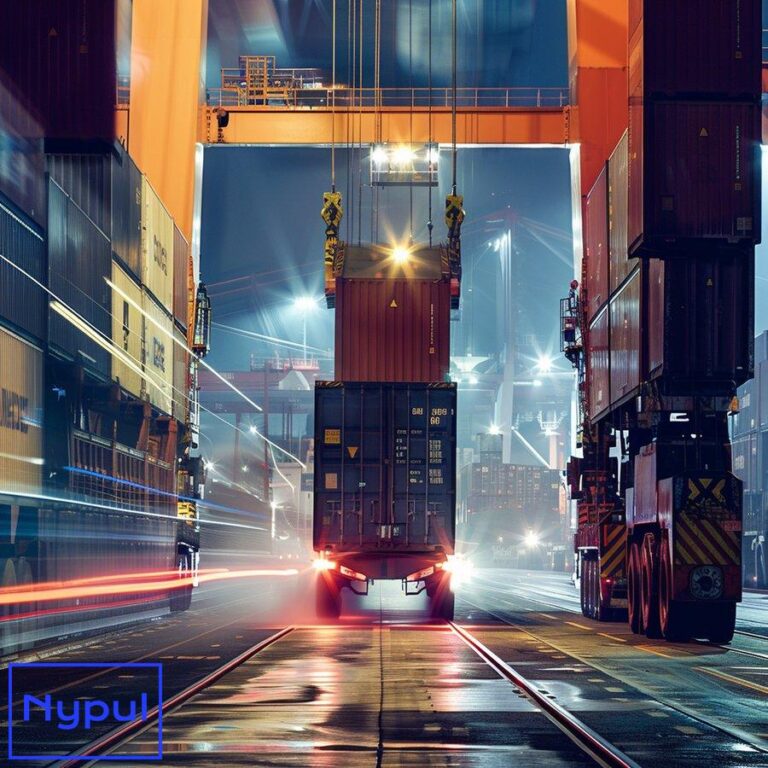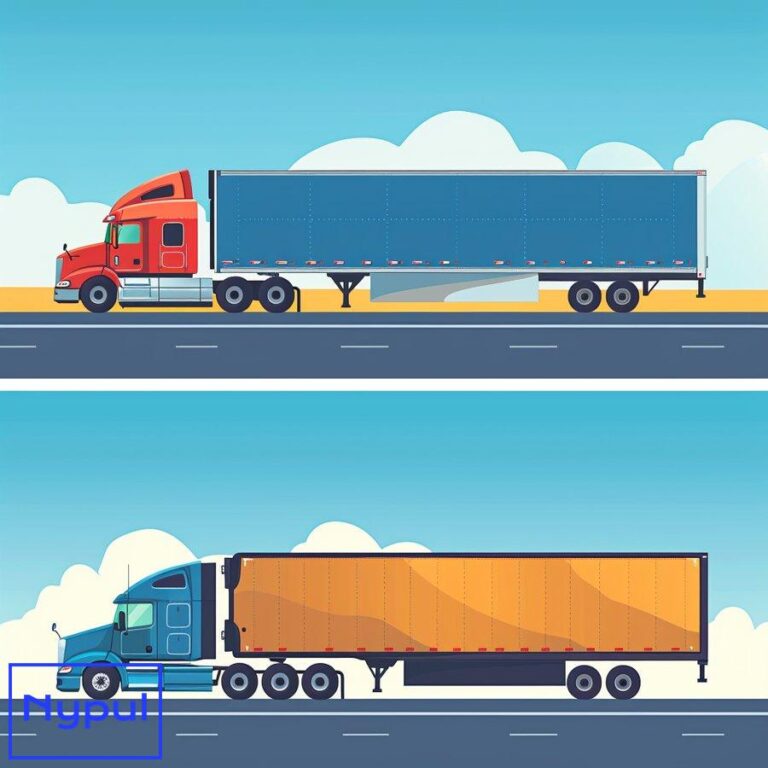How Does Intermodal Transportation Affect the Supply Chain
What is intermodal transportation and how does it work?
Intermodal transportation is a method of shipping freight using multiple modes of transport, such as trucks, trains, and ships, without handling the freight itself when changing modes. The cargo is packed into intermodal containers or trailers that can be easily transferred between different vehicles.

The intermodal transportation process typically involves the following steps:
-
Pickup and initial transport: The shipment is picked up by a truck and transported to an intermodal terminal, such as a rail yard or port.
-
Transfer to rail or ship: The intermodal container is loaded onto a train or ship for the long-haul portion of the journey. Rail and maritime transport are more fuel-efficient and cost-effective for long distances compared to trucks.
-
Final delivery by truck: Once the shipment reaches its destination terminal, it is transferred back onto a truck for final delivery to the consignee.
Intermodal transportation relies on standardized containers, such as 20-foot and 40-foot ISO containers, which can be easily stacked and secured on different modes of transport. This standardization allows for seamless transfers and efficient use of space, reducing handling time and costs.
How does intermodal transportation integrate with supply chain strategies?

Intermodal transportation plays a crucial role in modern supply chain strategies by providing a flexible, cost-effective, and efficient means of moving goods across long distances and between different regions. It enables companies to optimize their logistics operations and adapt to changing market conditions.
Integration of intermodal transportation into supply chain strategies involves:
-
Network design: Companies strategically locate their distribution centers and warehouses near intermodal terminals to facilitate seamless transfers between modes.
-
Collaborative planning: Supply chain partners, including shippers, carriers, and logistics providers, work together to plan and execute intermodal shipments, ensuring smooth handoffs and minimizing delays.
-
Visibility and tracking: Advanced technology solutions, such as real-time tracking and data analytics, provide end-to-end visibility of intermodal shipments, enabling better decision-making and exception management.
-
Inventory management: Intermodal transportation allows companies to maintain lower inventory levels by providing reliable and predictable transit times, reducing the need for safety stock.
By integrating intermodal transportation into their supply chain strategies, companies can achieve greater flexibility, resilience, and cost savings while meeting customer demands for faster and more reliable deliveries.
What efficiency gains does intermodal transport bring to the supply chain?

Intermodal transportation offers several efficiency gains to the supply chain, including:
-
Cost savings: By leveraging the economies of scale of rail and maritime transport for long-haul distances, intermodal shipping can significantly reduce transportation costs compared to trucking alone. The use of standardized containers also minimizes handling and storage costs.

-
Faster transit times: Intermodal transportation can reduce overall transit times by utilizing the most efficient mode of transport for each leg of the journey. For example, trains can cover long distances quickly, while trucks provide flexibility for final mile delivery.
-
Reduced congestion and emissions: Shifting freight from trucks to rail or ships helps alleviate highway congestion and reduces greenhouse gas emissions per ton-mile of freight moved.
-
Improved asset utilization: Intermodal transportation allows for better utilization of transportation assets, such as containers and trailers, by reducing empty backhauls and enabling faster turnaround times.
-
Streamlined processes: The standardization of containers and handling equipment in intermodal transportation simplifies loading, unloading, and transfer processes, reducing delays and improving overall efficiency.
| Efficiency Gains | Description |
|---|---|
| Cost savings | Leveraging economies of scale of rail and maritime transport, reducing handling and storage costs |
| Faster transit times | Utilizing the most efficient mode for each leg of the journey, reducing overall transit times |
| Reduced congestion and emissions | Shifting freight from trucks to rail or ships, alleviating highway congestion and reducing emissions |
| Improved asset utilization | Reducing empty backhauls and enabling faster turnaround times of containers and trailers |
| Streamlined processes | Simplifying loading, unloading, and transfer processes through standardization |
By capitalizing on these efficiency gains, companies can optimize their supply chain performance, reduce costs, and improve customer service levels.
How does intermodal transportation mitigate risks and enhance supply chain resilience?
Intermodal transportation enhances supply chain resilience by providing flexibility and redundancy in the face of disruptions. It mitigates risks in several ways:
-
Modal flexibility: Intermodal transportation allows companies to switch between different modes of transport in response to capacity constraints, weather disruptions, or other challenges. If one mode becomes unavailable or congested, freight can be quickly rerouted to an alternative mode.
-
Geographic diversity: By utilizing multiple modes of transport, intermodal shipping enables companies to diversify their transportation networks and reduce reliance on a single route or region. This geographic diversity helps mitigate the impact of localized disruptions, such as natural disasters or labor strikes.
-
Reduced exposure to driver shortages: The truck driver shortage has become a significant risk for supply chains relying heavily on trucking. Intermodal transportation lessens this risk by shifting a portion of the freight to rail or maritime transport, which are less affected by driver shortages.
-
Improved security: Intermodal containers are sealed and can be easily monitored using electronic tracking devices, reducing the risk of theft or tampering during transit. The use of secure intermodal facilities and standardized handling procedures further enhances cargo security.
-
Contingency planning: Intermodal transportation providers often have contingency plans in place to quickly respond to disruptions and reroute freight as needed. This proactive approach helps minimize the impact of supply chain disruptions on shippers and their customers.
| Risk Mitigation Strategy | Description |
|---|---|
| Modal flexibility | Switching between modes in response to capacity constraints or disruptions |
| Geographic diversity | Diversifying transportation networks and reducing reliance on a single route or region |
| Reduced exposure to driver shortages | Shifting freight to rail or maritime transport, which are less affected by driver shortages |
| Improved security | Utilizing sealed containers, electronic tracking, and secure intermodal facilities |
| Contingency planning | Proactively responding to disruptions and rerouting freight as needed |
By leveraging these risk mitigation strategies, intermodal transportation helps create a more resilient and adaptable supply chain that can better withstand and recover from disruptions.
What technological advancements are driving intermodal logistics?
Several technological advancements are transforming intermodal logistics, enabling greater efficiency, visibility, and automation throughout the supply chain. These include:

-
Internet of Things (IoT) and telematics: IoT devices and telematics systems enable real-time tracking and monitoring of intermodal shipments. Sensors can provide data on location, temperature, humidity, and other critical factors, allowing for proactive management of cargo.
-
Blockchain technology: Blockchain offers a secure, transparent, and tamper-proof way to record and share information among supply chain stakeholders. It can streamline document management, improve data accuracy, and facilitate faster, more efficient intermodal transactions.
-
Artificial Intelligence (AI) and machine learning: AI and machine learning algorithms can analyze vast amounts of data to optimize intermodal routing, predict demand, and improve decision-making. These technologies can also automate various processes, such as container scheduling and equipment maintenance.
-
Automation and robotics: Automated handling equipment, such as cranes and straddle carriers, can streamline intermodal terminal operations and reduce labor costs. Robotics technology is also being developed to automate container loading, unloading, and stacking processes.
-
Advanced analytics and visualization: Big data analytics and advanced visualization tools provide insights into intermodal network performance, helping identify bottlenecks, optimize asset utilization, and improve overall efficiency. These tools can also facilitate better collaboration and decision-making among supply chain partners.
| Technology | Application in Intermodal Logistics |
|---|---|
| Internet of Things (IoT) and telematics | Real-time tracking and monitoring of shipments, proactive cargo management |
| Blockchain technology | Secure and transparent information sharing, streamlined document management |
| Artificial Intelligence (AI) and machine learning | Optimization of routing, demand prediction, automation of processes |
| Automation and robotics | Streamlining terminal operations, automating container handling |
| Advanced analytics and visualization | Insights into network performance, optimization of asset utilization, improved collaboration |
By embracing these technological advancements, intermodal logistics providers and shippers can enhance operational efficiency, improve customer service, and gain a competitive edge in the market.
What challenges do companies face when implementing intermodal transportation?
While intermodal transportation offers numerous benefits, companies may face several challenges when implementing this approach. These include:
-
Infrastructure constraints: Intermodal transportation relies on the availability and capacity of rail lines, ports, and intermodal terminals. Aging infrastructure and capacity bottlenecks can lead to delays and inefficiencies in the intermodal network.
-
Coordination and communication: Intermodal transportation involves multiple stakeholders, including shippers, carriers, and logistics providers. Effective coordination and communication among these parties are essential for seamless operations, but can be challenging to achieve.
-
Data integration and standardization: The exchange of data and documents among intermodal stakeholders often lacks standardization, leading to inefficiencies and errors. Integrating disparate systems and ensuring data accuracy can be a significant hurdle.
-
Equipment availability and balance: Ensuring an adequate supply of intermodal containers and trailers at the right locations is crucial for efficient operations. Imbalances in equipment availability can lead to delays and additional costs.
-
Regulatory compliance: Intermodal transportation is subject to various regulations, such as customs requirements, safety standards, and environmental regulations. Complying with these regulations across multiple jurisdictions can be complex and time-consuming.
| Challenge | Description |
|---|---|
| Infrastructure constraints | Aging infrastructure and capacity bottlenecks leading to delays and inefficiencies |
| Coordination and communication | Difficulty in achieving effective coordination and communication among multiple stakeholders |
| Data integration and standardization | Lack of standardization in data exchange, leading to inefficiencies and errors |
| Equipment availability and balance | Ensuring adequate supply of containers and trailers at the right locations |
| Regulatory compliance | Complexity of complying with various regulations across multiple jurisdictions |
To overcome these challenges, companies must invest in technology, collaborate closely with their supply chain partners, and continuously optimize their intermodal operations. By addressing these issues proactively, organizations can realize the full potential of intermodal transportation in their supply chains.
How does intermodal transportation facilitate global trade?

Intermodal transportation plays a vital role in facilitating global trade by enabling the efficient movement of goods across international borders. It supports global supply chains in several ways:

-
Connectivity: Intermodal transportation connects countries and regions through a network of ports, rail lines, and highways. This connectivity allows companies to access new markets, source materials from diverse locations, and distribute products globally.
-
Cost-effectiveness: By leveraging the economies of scale of maritime and rail transport, intermodal shipping provides a cost-effective means of moving goods over long distances. This cost advantage is particularly significant for international trade, where transportation costs can greatly impact product competitiveness.
-
Standardization: The use of standardized containers, such as 20-foot and 40-foot ISO containers, facilitates seamless intermodal transfers across different countries and transportation networks. This standardization simplifies cargo handling, reduces delays, and enables efficient international trade.
-
Trade facilitation: Intermodal transportation supports trade facilitation initiatives, such as the development of inland ports and free trade zones. These initiatives help streamline customs procedures, reduce transit times, and lower trade barriers, promoting global economic growth.
-
Environmental sustainability: By shifting freight from trucks to more environmentally friendly modes, such as ships and trains, intermodal transportation helps reduce the carbon footprint of global trade. This sustainability advantage is becoming increasingly important as countries and companies seek to mitigate the environmental impact of their operations.
| Benefit | Description |
|---|---|
| Connectivity | Connecting countries and regions through a network of ports, rail lines, and highways |
| Cost-effectiveness | Providing a cost-effective means of moving goods over long distances through economies of scale |
| Standardization | Facilitating seamless intermodal transfers across different countries and transportation networks |
| Trade facilitation | Supporting initiatives that streamline customs procedures, reduce transit times, and lower trade barriers |
| Environmental sustainability | Reducing the carbon footprint of global trade by shifting freight to more environmentally friendly modes |
As global trade continues to expand and supply chains become more complex, intermodal transportation will remain a critical enabler of international commerce. By providing efficient, cost-effective, and sustainable solutions for moving goods across borders, intermodal shipping helps companies navigate the challenges and opportunities of the global marketplace.
How can companies measure the impact of intermodal transport on their supply chain performance?
To assess the effectiveness of intermodal transportation in their supply chains, companies can use a range of performance metrics and key performance indicators (KPIs). These measures help evaluate the impact of intermodal shipping on cost, service, and sustainability goals. Key metrics include:
-
Transportation cost per unit: This metric measures the total cost of intermodal transportation per unit of product shipped. It includes direct costs, such as freight charges, and indirect costs, such as handling and storage fees. Comparing this metric across different transportation modes and routes can help identify cost-saving opportunities.

-
Transit time and reliability: Transit time measures the duration from pickup to delivery, while reliability refers to the consistency of meeting promised delivery dates. Tracking these metrics helps assess the speed and dependability of intermodal transportation, which are critical factors for customer satisfaction.
-
On-time performance: This KPI measures the percentage of shipments delivered on or before the promised delivery date. It is a key indicator of service quality and can help identify areas for improvement in the intermodal network.
-
Inventory carrying costs: Intermodal transportation can impact inventory levels and associated carrying costs. By providing reliable and predictable transit times, intermodal shipping can help reduce safety stock and minimize inventory expenses.
-
Carbon footprint: Measuring the greenhouse gas emissions associated with intermodal transportation helps companies assess their environmental impact and progress towards sustainability goals. This metric can be used to compare the carbon intensity of different transportation modes and identify opportunities for emission reductions.
| Metric | Description |
|---|---|
| Transportation cost per unit | Total cost of intermodal transportation per unit of product shipped |
| Transit time and reliability | Duration from pickup to delivery and consistency of meeting promised delivery dates |
| On-time performance | Percentage of shipments delivered on or before the promised delivery date |
| Inventory carrying costs | Impact of intermodal transportation on inventory levels and associated carrying costs |
| Carbon footprint | Greenhouse gas emissions associated with intermodal transportation |
By regularly monitoring these metrics and KPIs, companies can gain valuable insights into the performance of their intermodal transportation operations. This data-driven approach enables continuous improvement, helps optimize supply chain efficiency, and supports better decision-making in the face of changing market conditions.
In conclusion, intermodal transportation is a critical component of modern supply chains, offering a flexible, cost-effective, and sustainable solution for moving goods across long distances and international borders. By integrating intermodal shipping into their logistics strategies, companies can achieve significant efficiency gains, mitigate risks, and enhance overall supply chain resilience.
However, implementing intermodal transportation also presents challenges, such as infrastructure constraints, coordination issues, and regulatory compliance. To overcome these hurdles, companies must invest in technology, foster collaboration among supply chain partners, and continuously optimize their operations.
As global trade continues to evolve and supply chains become more complex, the role of intermodal transportation will only grow in importance. By embracing technological advancements, such as IoT, blockchain, and AI, intermodal logistics providers and shippers can unlock new levels of efficiency, visibility, and automation.
To measure the impact of intermodal transportation on their supply chain performance, companies should track key metrics and KPIs related to cost, service, and sustainability. This data-driven approach enables continuous improvement and helps organizations make informed decisions in a dynamic business environment.
Ultimately, the successful implementation of intermodal transportation requires a strategic, collaborative, and adaptive approach. By leveraging the power of intermodal shipping, companies can build more resilient, efficient, and sustainable supply chains that are well-positioned to thrive in the face of future challenges and opportunities.






